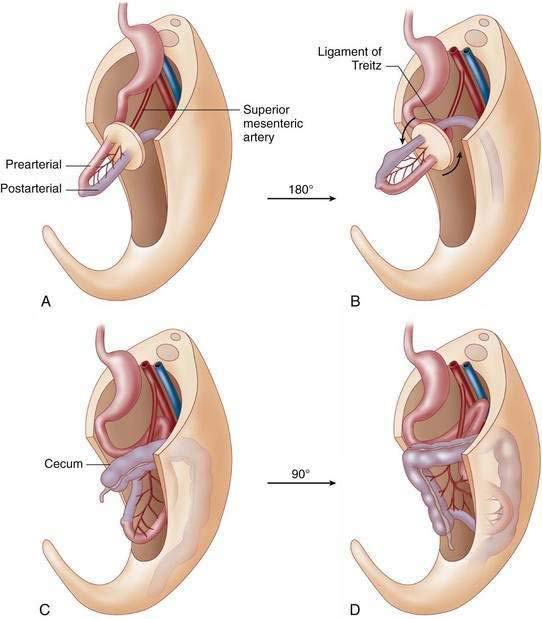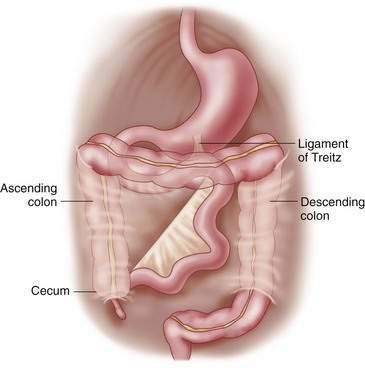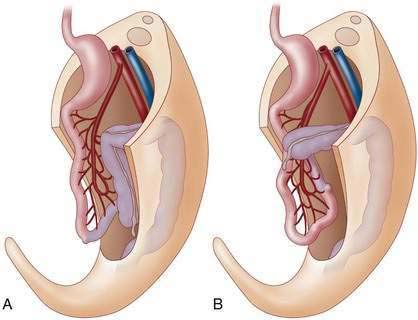CHAPTER 16 Malrotation
Ladd Procedure
Step 1: Surgical Anatomy
♦ The term malrotation describes several related abnormalities characterized by the failure of the intestine to assume its normal anatomic position.
♦ The normal anatomic position of the intestine is achieved during the 10th week of gestation when the herniated intra-abdominal contents return to the abdominal cavity and begin a counterclockwise rotation about the superior mesenteric artery (Fig. 16-1).
♦ The final result of this normal rotational process is a retroperitoneal duodenum with the ligament of Treitz in the left upper quadrant at or close to the level of the antrum of the stomach. The beginning of the small intestine (jejunum) is located to the left of midline in the left upper quadrant and the cecum fixed in the right lower quadrant. The mesentery of the normally fixed small intestine is broad based, extending from the left upper quadrant to the right lower quadrant of the abdomen and is at low risk for volvulus (Fig. 16-2).
♦ The most common forms of malrotation are nonrotation and incomplete rotation, which predispose the patient to duodenal obstruction and volvulus (Fig. 16-3).
Step 2: Preoperative Considerations
Stay updated, free articles. Join our Telegram channel

Full access? Get Clinical Tree





